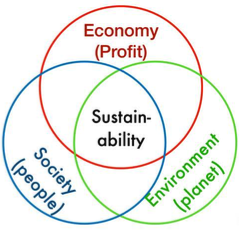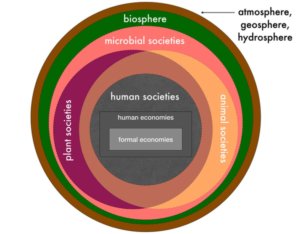An international collaboration reveals a new definition of sustainability that expands the concept to non-human species and their needs.
Published in Global Sustainability, the research led by Dr Christoph Rupprecht, a Griffith University alumnus now at the Research Institute for Humanity and Nature, identifies a critical flaw in the original concept of sustainability.
“Past resource management based definitions of sustainability have ignored the fact that the wellbeing and needs of all living creatures is interdependent in ecologically complex ways,” Dr Rupprecht said.

Dr Natalie Osborne from Griffith University’s School of Environment and Science
Dr Natalie Osborne from Griffith University’s School of Environment and Science said the new multispecies concept of sustainability overcomes this flaw, meeting the needs of current and future generations of all species.
“We combined the latest research on how species interact, ecologically and socially, with insights from Indigenous scholars and cybernetics, the study of communication in complex systems, to develop our concept of multispecies sustainability.
“This research showcase the potential wide-ranging applications to help human-wildlife coexistence and radically rethinking urban green-space design.
“It could not only change how we plan and design cities as more-than-human habitats, but also broaden community engagement and transform how we measure economic productivity and well-being in urban environments.”
“Whether you look at climate change, biodiversity decline or microplastic pollution, sustainability efforts are failing across the board. But radical transformation requires the right tools, ” Dr Rupprecht said.
“Only a concept that understands and fosters complex multispecies relationships can help sustain the well-being of species depending on one another, today and tomorrow.”
Visualisations of sustainability to date display environment, society and economy with an equal weighting, despite the latter two being entirely depend on the environment.

Past visualisation of the sustainability displaying environment, society and economy with an equal weighting

Multi-species visualisation of sustainability demonstrating the interdependence of human, animal, plant and microbial societies
“In contrast, our conceptual models demonstrate the interdependence of human, animal, plant and microbial societies,” Dr Osborne said.
“They emphasises how the earth system including landscapes, cities and the bodies of living things are shaped by shared agency.”
Dr Rupprecht acknowledges that many of the world’s best practices in terms of sustainability have been developed by Indigenous people and are part of traditional ecological knowledge systems.
“These societies and cultures have the best track records in co-existing with other species,” said Dr Rupprecht.
The team hopes their findings will be a starting point for exploration and discussion about topics ranging from what multispecies cities might look like, to the implications of a multispecies inspired concept of public health.
